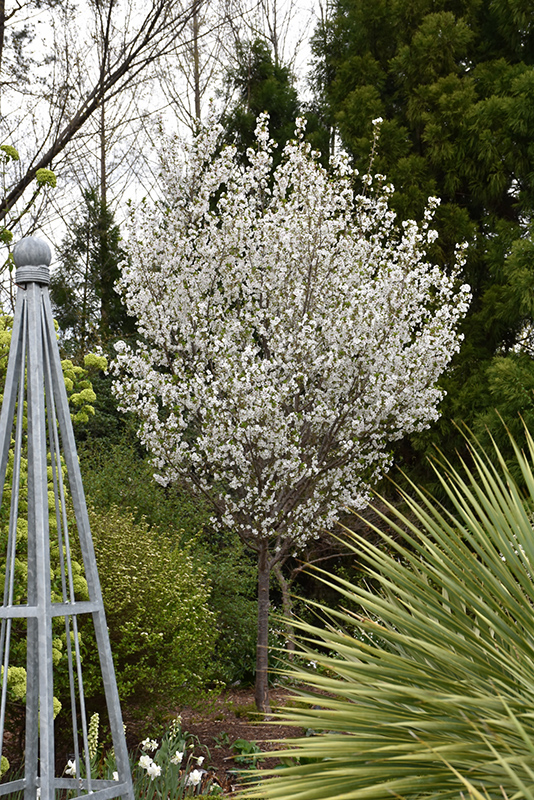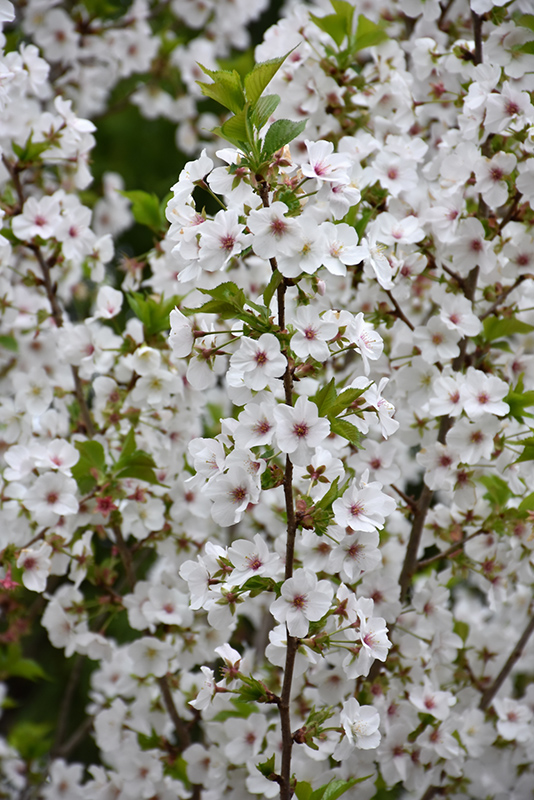Snow Goose Flowering Cherry
Prunus 'Snow Goose'
Height: 25 feet
Spread: 20 feet
Sunlight:
![]()
Hardiness Zone: 6a
Other Names: Oriental Cherry, Japanese Cherry
Description:
A beautiful small front yard accent tree, this newer selection is smothered in snowy white flowers in early spring before the leaves, radiant bronze bark, good fall color, and a compact oval habit of growth; needs full sun and well-drained soil
Ornamental Features
Snow Goose Flowering Cherry is blanketed in stunning clusters of fragrant white flowers along the branches in early spring, which emerge from distinctive pink flower buds before the leaves. It has green deciduous foliage. The serrated pointy leaves turn an outstanding orange in the fall. The smooth dark red bark adds an interesting dimension to the landscape.
Landscape Attributes
Snow Goose Flowering Cherry is a deciduous tree with a shapely oval form. Its average texture blends into the landscape, but can be balanced by one or two finer or coarser trees or shrubs for an effective composition.
This is a high maintenance tree that will require regular care and upkeep, and is best pruned in late winter once the threat of extreme cold has passed. Gardeners should be aware of the following characteristic(s) that may warrant special consideration;
- Disease
Snow Goose Flowering Cherry is recommended for the following landscape applications;
- Accent
- Shade
Planting & Growing
Snow Goose Flowering Cherry will grow to be about 25 feet tall at maturity, with a spread of 20 feet. It has a low canopy with a typical clearance of 3 feet from the ground, and is suitable for planting under power lines. It grows at a medium rate, and under ideal conditions can be expected to live for 50 years or more.
This tree should only be grown in full sunlight. It does best in average to evenly moist conditions, but will not tolerate standing water. It is not particular as to soil pH, but grows best in rich soils. It is highly tolerant of urban pollution and will even thrive in inner city environments, and will benefit from being planted in a relatively sheltered location. This particular variety is an interspecific hybrid.


